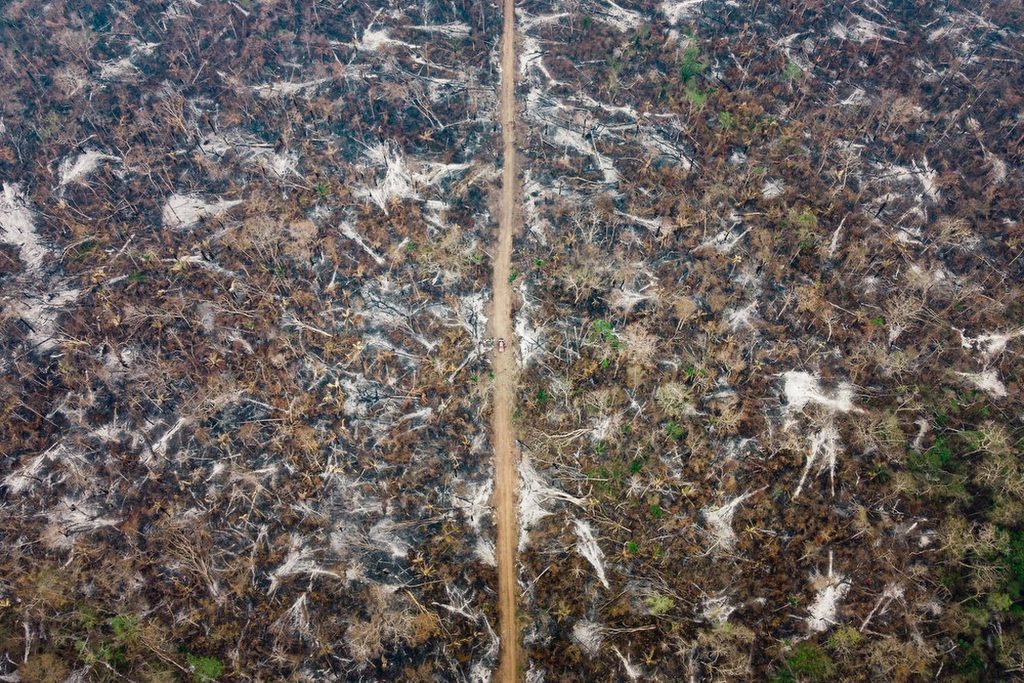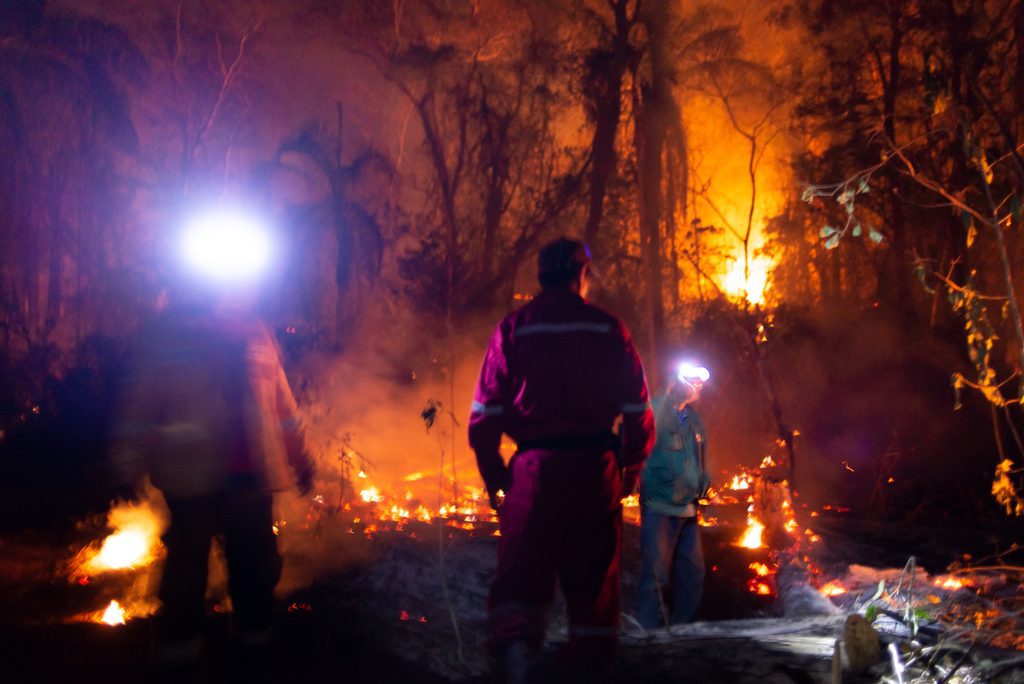Policy brief: tackling policy dilemmas for wetland restoration
08 December, 2025
Tuesday 17 september 2024
Photo: Fires in the Chiquitano dry forest. © Manuel Seoane
The Chiquitano Dry Forest, one of the largest intact tropical dry forests in the world, covers 23 million hectares, with most of it located in Bolivia. Unlike tropical rainforests, the Chiquitano is naturally adapted to long dry seasons and periodic fires. However, the increasing frequency and intensity of recent fires have severely disrupted its delicate balance. By early September, Fundación Tierra reported that over 4 million hectares had burned, including the San Matías Integrated Natural Management Area, where nearly 45% of the territory was affected. These fires have repeatedly struck the same regions in Bolivia, particularly the Chiquitania, preventing the forest from fully recovering between fire seasons. The cumulative impact of annual fires is devastating not only to the forest’s natural regeneration but also to the livelihoods of the local communities that rely on it.
Frequent fires over the last two decades have pushed the resilience of the Chiquitano Dry Forest to its limits. Research shows that areas affected by fires two or more times are less resilient compared to those that burned only once. Continuous fires prevent natural regeneration, alter species composition, and weaken the ecosystem’s stability. Vegetation that burns repeatedly tends to shift towards fire-tolerant species, reducing overall biodiversity[1]Frontiers | Tropical Dry Forest Resilience to Fire Depends on Fire Frequency and Climate (frontiersin.org).
The fires in the Chiquitano Dry Forest are having a profound impact on both biodiversity and the local communities that rely on the forest. As the fires burn through these ecosystems, they destroy habitats for numerous species, including endangered animals like jaguars, pumas, and endemic bird species. The forest is home to rich biodiversity, but repeated fires are pushing many species to the brink of extinction. Plants, especially slow-growing trees, are also unable to regenerate quickly enough, leading to a shift in species composition that favors fire-resistant but less ecologically valuable species[2]https://www.frontiersin.org/journals/forests-and-global-change/articles/10.3389/ffgc.2021.755104/full.
Local communities are facing severe consequences as well. The fires have displaced thousands of people, destroying homes, crops, and livestock. Many rural families rely on subsistence farming and the natural resources provided by the forest. The destruction of crops has led to food shortages and economic hardship. In addition to the immediate impact on livelihoods, the long-term damage to soil and water resources threatens to undermine these communities’ ability to recover.
As wildfires continue year after year, the future for both biodiversity and human populations in the Chiquitano remains uncertain.
Land use changes, such as deforestation for agriculture and cattle ranching, contribute significantly to the increased fire frequency. Poor land management practices, combined with the expansion of road networks and settlements, have increased the risk of uncontrolled fires. Moreover, climate change has led to more severe dry seasons and prolonged periods of drought, making the region’s vegetation more flammable. Climatic models predict that Bolivia will continue to experience rising temperatures and reduced rainfall, further exacerbating fire risks [3]Devisscher, T (2016), https://journals.plos.org/plosone/article?id=10.1371/journal.pone.0161323.


Additionally, government policies in Bolivia have significantly contributed to the ongoing forest fires, particularly in the Chiquitano Dry Forest. Policies promoting agricultural expansion, including the clearing of land for soy, maize cultivation, and cattle ranching, have been key drivers of deforestation. These policies often prioritize economic growth over environmental protection, leading to extensive land clearing through practices like slash-and-burn agriculture[4]https://www.earthsight.org.uk/news/idm/bolivia-approves-gm-soy-cultivation-biofuel-use-illegal-forest-loss. Weak enforcement of deforestation laws and government policies’ incentives for land use change, such as supporting biofuel production, have encouraged agribusiness to expand into forested areas, often without adequate environmental safeguards[5]https://www.earthsight.org.uk/news/idm/bolivia-deforestation-decree-3973-cattle-beni.
Our local partners (CEDIB, Probioma and Savia) have worked for many years to gather critical data, lobby for sustainable land use, and highlight the role of the agribusiness sector in driving deforestation. Visit the Green Livelihoods Alliance website for more information about their work.
As IUCN NL, we have learned that flexible funding and prevention planning are key for this type of emergency. We have made significant efforts to support affected communities and ecosystems. Emergency funds were swiftly made available to assist communities in need (alleviating food shortage) and to strengthen firefighting efforts. Through our programme Ñembi Guasu, we have incorporated interventions for increasing fire prevention and improving forest fire management into our planning, ensuring that the protected area was better prepared for the fire season. We maintain close communication with partners to gather essential information, recognising that global media coverage has been insufficient in highlighting the crisis’s full extent. Continued advocacy for sustainable land management and stronger protection of these vital ecosystems is crucial to ensuring recovery and resilience for both local communities and biodiversity.